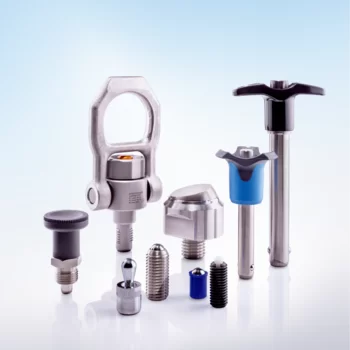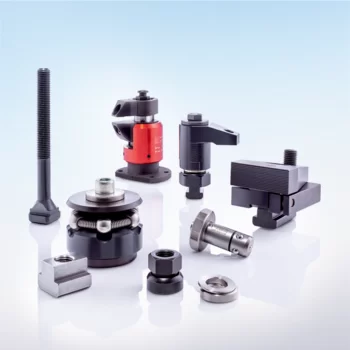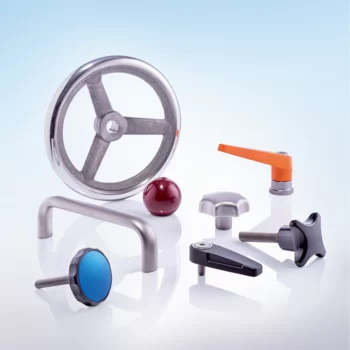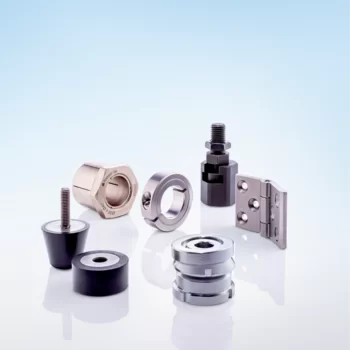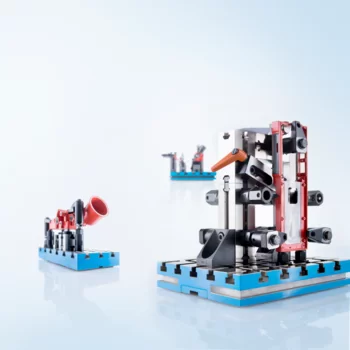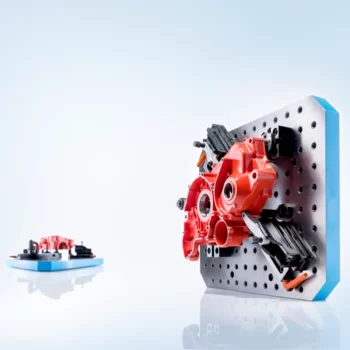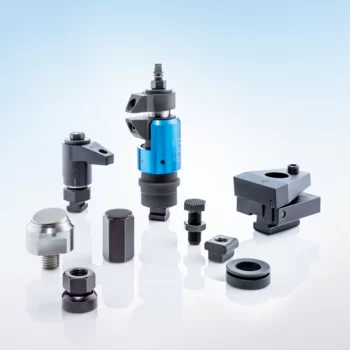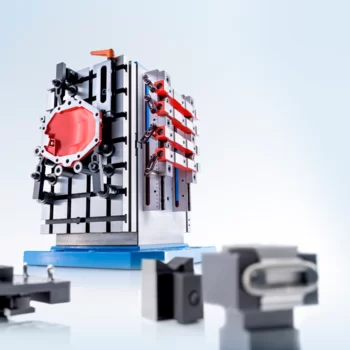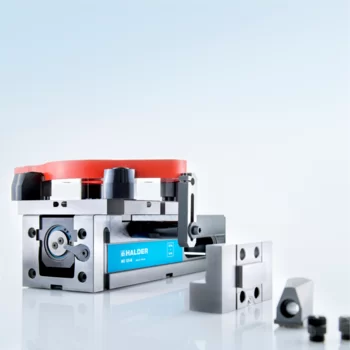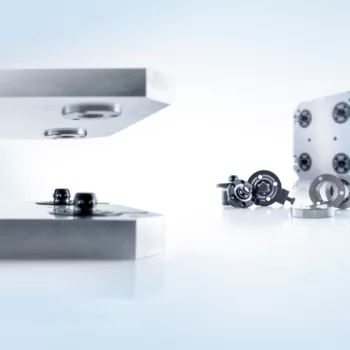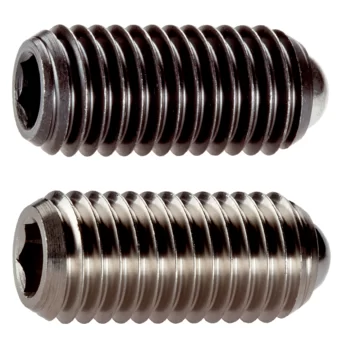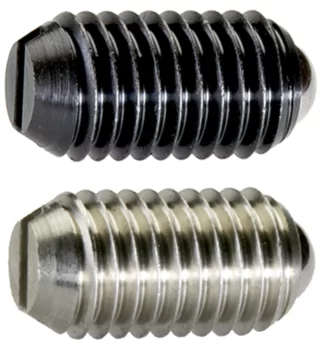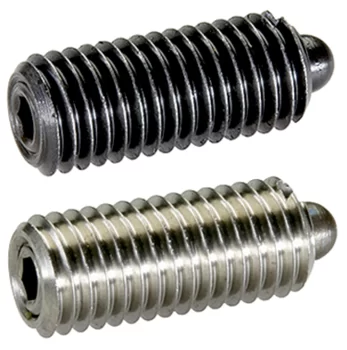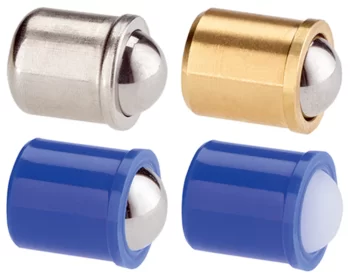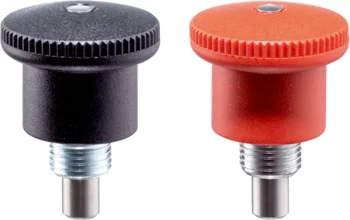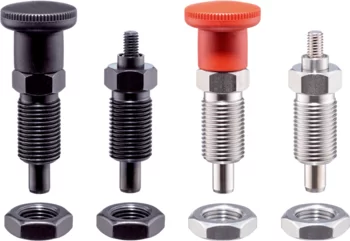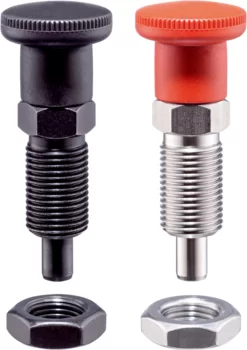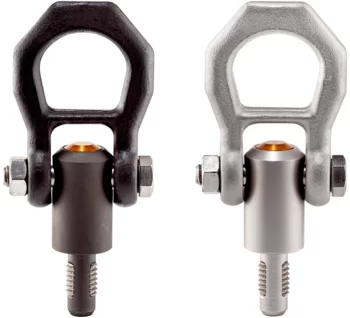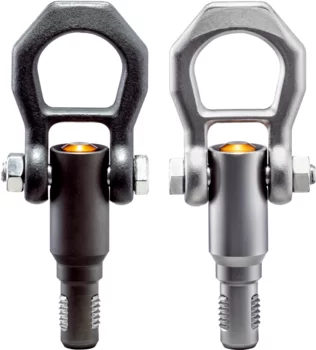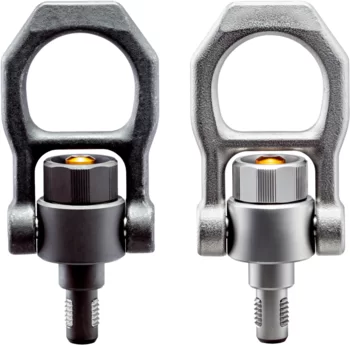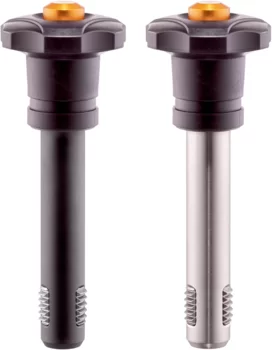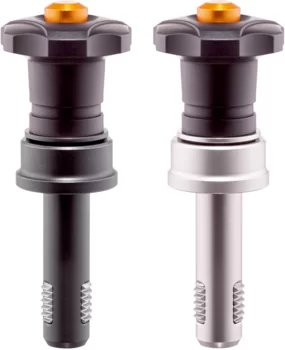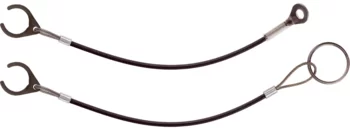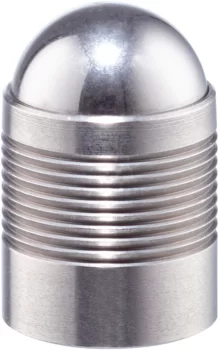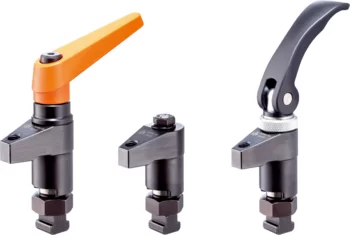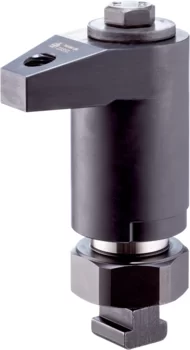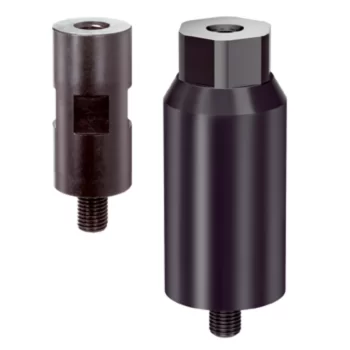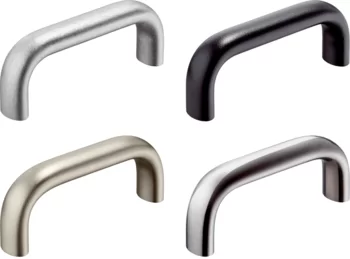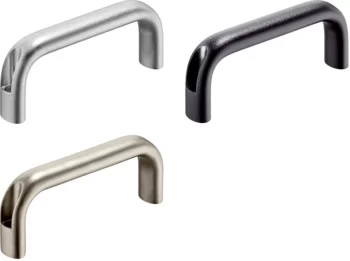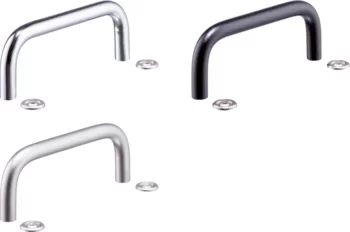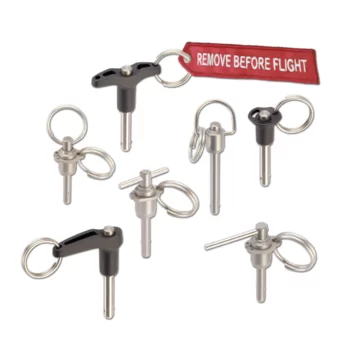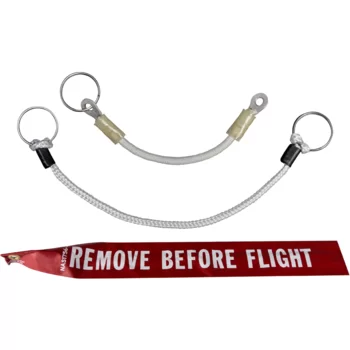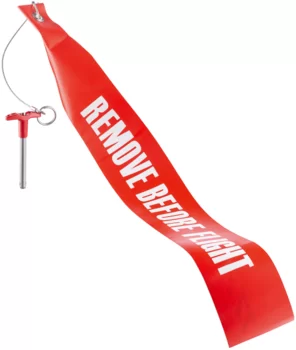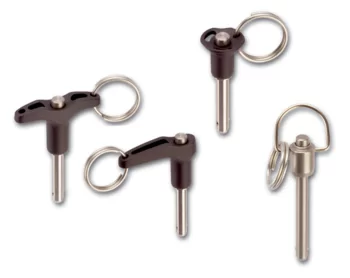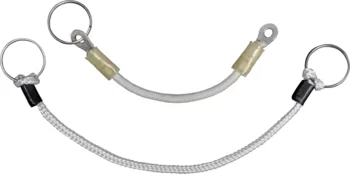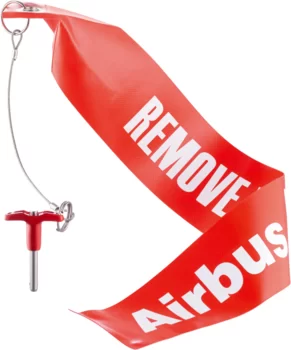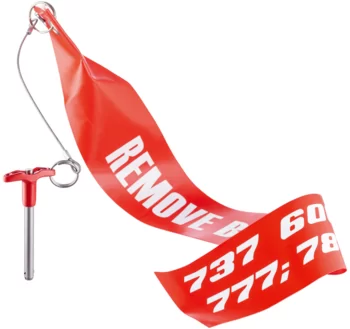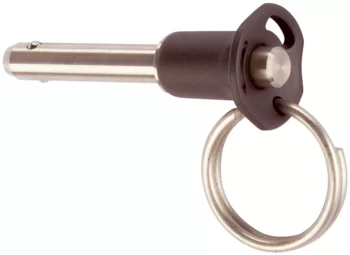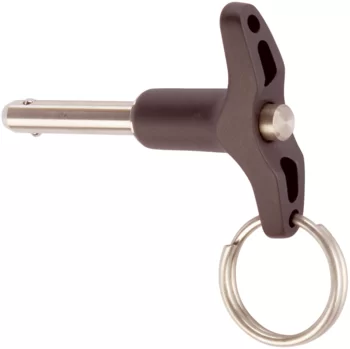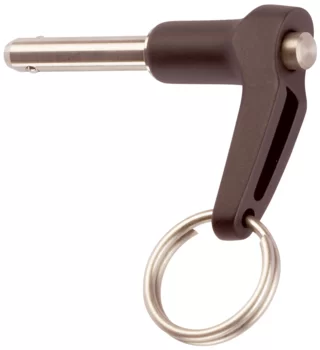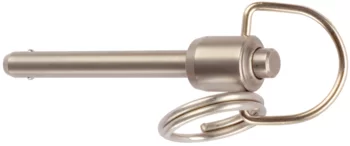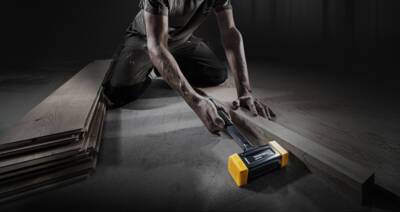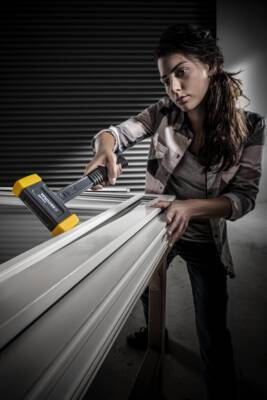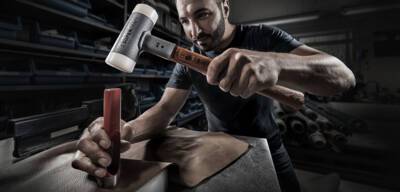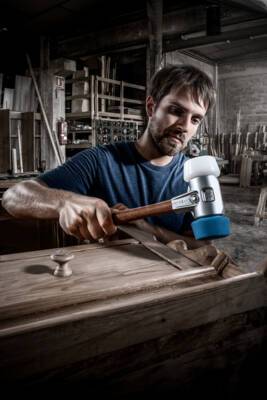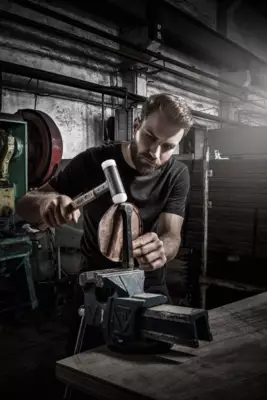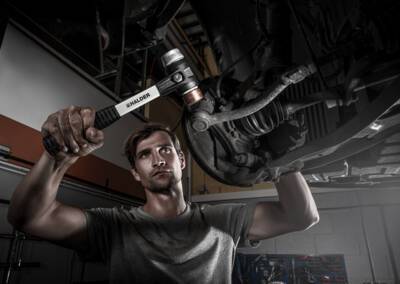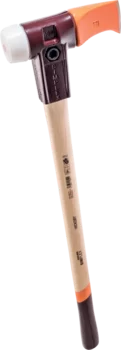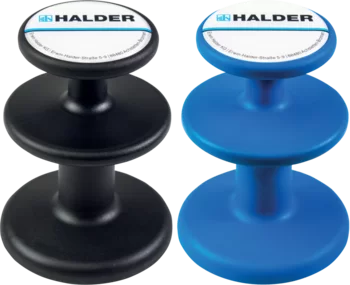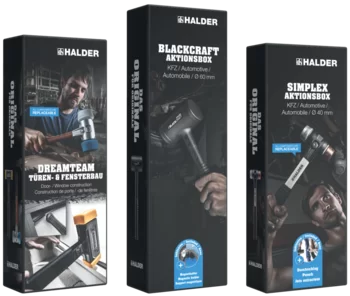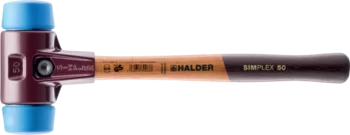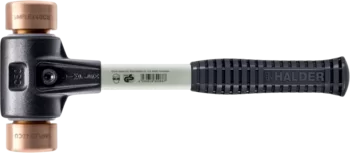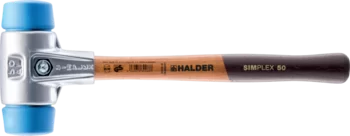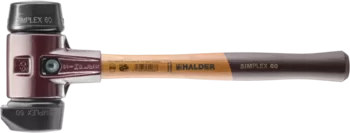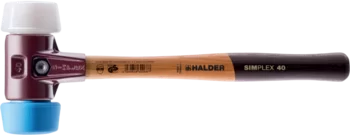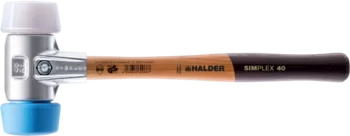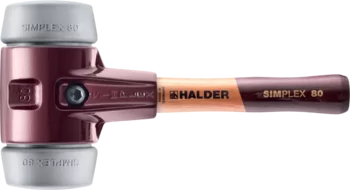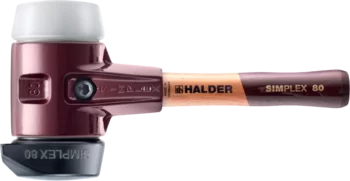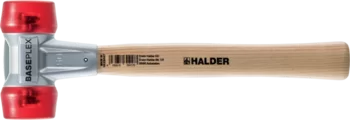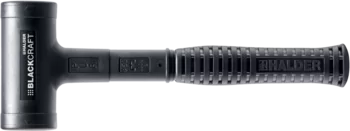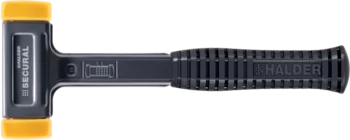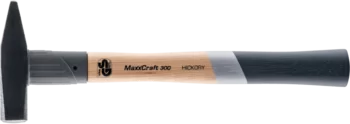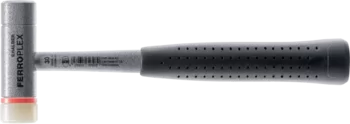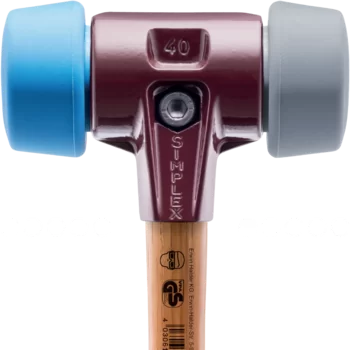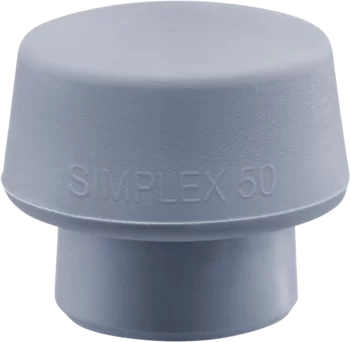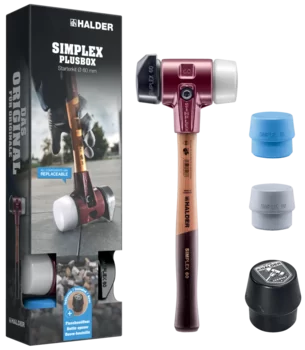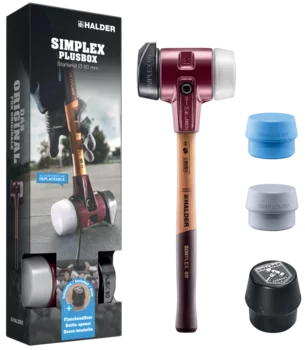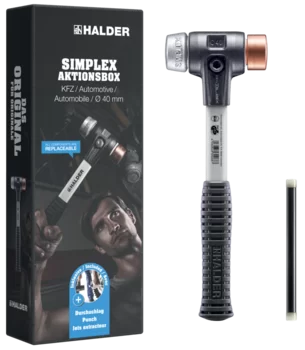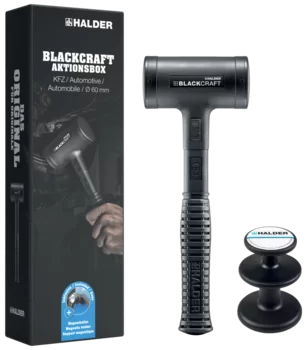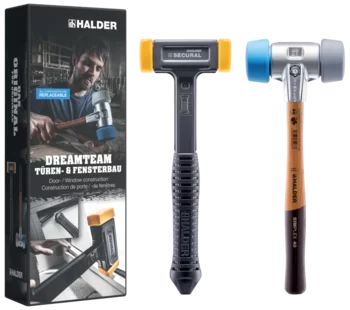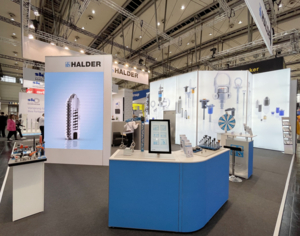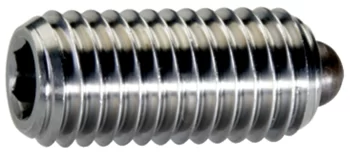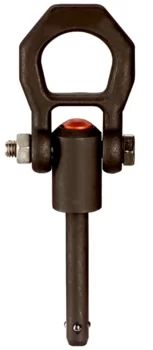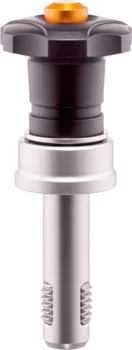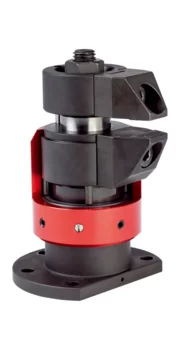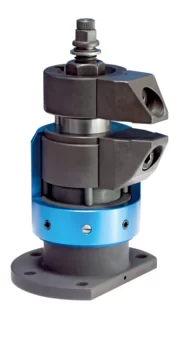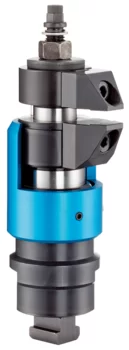Successful EMO presentation for Halder
New floating clamps with compact design
It is often the small things that ensure more efficient production, simplify processes and thus increase economic efficiency. These types of solutions are exactly where Erwin Halder KG special expertise lies. Yet again, the experts used EMO in Hanover as a platform to showcase numerous solutions for the most diverse user requirements, such as the threaded lifting and threaded lock pins as well as the floating clamps with compact design.
Optimized processes and increased productivity: Operating with peek efficiency in manufacturing has never been more important - especially in light of the skilled labour shortage. Carrying an extensive range of standard parts, Erwin Halder KG offers a host of solutions that make working life easier for the user and afford them savings in time and cost at the same time. At EMO in Hanover, the experts from Achstetten-Bronnen once again attracted scores of visitors from the trade to the Halder exhibition booth. Aside from numerous product range expansions, for example in the lines of spring plungers, clamping elements and machine elements, the company unveiled threaded lifting and threaded lock pins that can certainly be counted among the top highlights.
Quick, simple, and self-locking
“You will be hard-pressed to find a better product than screws for connections that only need to be released occasionally. Nothing is more affordable. However, if your application requires frequent changes, for example during load transport or the exchange of wearing parts, our threaded lifting / lock pins are worth their weight in gold. These products make releasing and refastening screw connections a cinch – without requiring tools and allowing you to use existing threaded holes. This streamlines the process substantially and helps save precious time. There is enormous potential here - especially when you experience a staff shortage in crucial areas," states Bernd Janner, Sales Manager of Erwin Halder KG, describing the advantages.
But, how do they make assembly such a breeze? Threaded lifting pins and threaded lock pins basically work in the same way: Arranged at the bottom end of the pins are self-locking threaded segments that are matched to the corresponding thread sizes. Releasing them merely requires that the user press the aluminium press button at the top end of the pin. On the threaded lifting pin, this button is found below the moveable shackle. The pin can then be easily inserted into the existing threaded hole. When the press button is released, the threaded segments engage in the existing thread. A semi-turn at the end will lock the threaded lock pin firmly and securely in place inside the bore hole. A push of the press button is all it takes to release the segments again. To prevent the connection from inadvertently coming apart during a load change, the shackle of the threaded lifting pins is equipped with a locking stud.
The rotating shackle fitted on the threaded lifting pins offers additional benefits: The shackle always aligns in tensile direction during lifting, keeping the pin from twisting. This is especially important during a diagonal pull: The shackle can rotate freely around the pin thanks to the bearing ring with its maintenance-free plain bearing bush, which offers resistance to temperature chemicals and oil. As only the shackle rotates rather than the pin itself, the load-handling device remains firmly screwed inside the thread, allowing for the safe lifting and transport of the part.
Clamping complex and sensitive components in a space-saving manner
Another highlight was introduced in the form of the floating clamps with compact design. These tools make it possible to clamp components and blanks without deformation and in tight spaces, even if the parts are thin and particularly sensitive to bending. Bernd Janner on that topic: Complex clamping situations, such as those involving thin and complex components with overdetermined clamping points, turn clamping with dial gauges into an undertaking that is highly involved, unreliable and less than economical. In these scenarios, our floating clamps offer enormous advantages: Thanks to their compact design, they are the perfect solution to the problem of securely supporting and clamping additional clamping points found, for example, on ribs, beads and shackles. Spring force causes the clamp to “floatingly” contour to the component before being tightened. This keeps the workpiece from becoming warped or deformed. Their use prevents vibrations and chatter marks. Even workpieces with thin walls can thus be processed with ultimate precision and reliability and with outstanding surface quality.”
The compact floating clamps offered by Erwin Halder KG come in two versions: one with integrated clamping and locking and one that features separate clamping and locking. The floating clamp with integrated clamping and locking (red anodised aluminium housing) is the ideal choice for more stable components. It allows you to fix the workpiece in place and lock it in place in a single work step. When it comes to clamping components that are exceedingly sensitive to bending, the floating clamp with separate clamping and locking (blue anodised aluminium housing) is the recommended option.
Photos 1 + 2 + 3: A successful Halder trade show presentation at EMO.
Photos 4 +5: Halder once again used EMO in Hanover as an opportunity to showcase numerous solutions for the most diverse user requirements, such as the threaded lifting and threaded lock pins.
The floating clamps with compact design were among the highlights unveiled at the fair by Halder.
Downloads:
